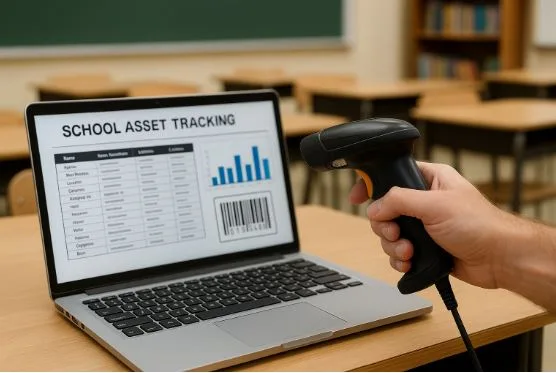Enhancing Educational Infrastructure Through Intelligent Resource Oversight
Introduction
In the evolving landscape of education, the responsible stewardship of resources is becoming increasingly central to school success. Educational institutions face mounting pressure to optimize budgets while ensuring that students and staff have reliable access to necessary equipment and facilities. Modern administrators are turning to digital tools that enable real-time oversight of supplies, devices, and infrastructure. Through such solutions, schools can not only reduce waste and downtime, but also plan strategically, manage maintenance needs proactively, and extend the utility of existing assets.
The Strategic Imperative for Smart Oversight
Across educational districts, schools grapple with a wide array of assets—from laptops, tablets, and science lab equipment to benches, gym gear, and HVAC systems. Traditional manual tracking methods are prone to inaccuracies, leading to misplaced or underused items, unnecessary purchasing, and potential gaps in service delivery. Schools are seeking frameworks that offer centralized control and streamlined workflows, thereby better aligning resources to student and staff needs. This shift is not merely operational but also foundational, supporting institutional transparency, budget accountability, and sustainable practice.
Digital Solutions Empowering Schools
Today’s solutions are transforming how institutions manage resources by enabling dynamic visibility and intelligent maintenance. In one district, real-time inventories mean lost devices are swiftly located, drastically reducing replacement costs. In another, automated work orders trigger preventive upkeep for aging HVAC systems, preventing disruptions to classroom comfort. These tools aggregate usage data to help administrators anticipate needs, avoid overstocking, justify capital investments, and allocate existing assets more effectively. Software that supports school asset tracking empowers decision-makers with dashboards, alerts, and audit trails that drive measurable improvements in asset utilization.
Operational Benefits and Efficiency Gains
The integration of digital tracking systems brings several tangible advantages. First, schools can expect substantial time savings; staff spend less effort searching for items or reconciling inventories manually. Second, improved oversight enables extended asset lifespan: timely maintenance prevents premature breakdown, while usage data guides replacement schedules based on real-world wear. Third, financial stewardship is strengthened—leaders can produce robust reports to justify budget allocations, support grant applications, and respond to audits. Fourth, with clear accountability, the risk of theft or misplacement drops, and behaviour around asset use becomes more responsible.
Fostering Sustainable Use and Equity
Beyond logistics, optimized resource management supports sustainability and educational equity. When devices are tracked effectively, schools can deploy underused assets to underserved classrooms, ensuring all students benefit from technology. Replacing rather than purchasing new equipment only when necessary reduces environmental impact through less waste and lower consumption of raw materials. Furthermore, extension of asset lifecycles reduces schools’ carbon footprints and supports cost-conscious stewardship over the long term. Resource visibility enables better planning for refurbishing and recycling, aligning procurement with ethical and green policies.
Implementation Framework and Best Practices
Successful deployment of smart resource oversight requires thoughtful planning. First, institutions must define clear asset categories, assign unique identifiers, and label items to simplify scanning and logging. Mobile access is critical: staff should be able to record usage and perform audits directly from classrooms or storage areas. A phased rollout—starting with high-value or high-usage items—ensures manageable scope and early wins. Training staff on procedures and benefits is essential; engaging stakeholders through shared dashboards and usage metrics builds buy-in. Integrations with existing systems, such as work-order platforms or billing records, amplify value by creating unified operational environments.
Real-World Impact Stories
Consider a district that implemented a mobile-enabled tracking system. Within six months, they reduced device loss by half, shrank average resolution time for maintenance tickets by 40 percent, and redirected savings to fund additional science kits. Another school consolidated classroom furniture inventory—chairs, desks, AV carts—enabling administrators to redeploy surplus items efficiently, avoiding two major purchases and freeing budget for extracurricular programs. In each case, technology-driven oversight laid the foundation for smarter planning, faster response, and measurable savings.
Overcoming Common Challenges
While promising, implementation is not without obstacles. Schools may face resistance from staff apprehensive about new procedures or concerned about increased accountability. To mitigate pushback, leadership must communicate the benefits, provide training, and position the system as supportive—not punitive. Budget constraints might delay rollout; schools might pursue grant funding or stagger implementation to align with fiscal cycles. Technology disparities—such as inconsistent mobile device availability—should be addressed through equitable provisioning. Finally, data hygiene matters: defined ownership, audit schedules, and reconciliation practices are required to maintain accurate inventories over time.
Long-Term Outlook and Strategic Value
Over the long term, digital resource oversight transforms from a convenience to a strategic asset. Data collected builds institutional memory: patterns of usage, repair trends, and lifecycle costs inform capital planning. Districts can compare across schools, identify under-resourcing, and target investments for greatest impact. The system also supports emergency preparedness; in crisis scenarios, knowing which assets are accessible where can expedite response and recovery. In short, the visibility and intelligence gained through such frameworks become a backbone for resilient, efficient, and responsive educational environments.
Conclusion
As schools navigate fiscal pressures, technological shifts, and rising expectations, the ability to monitor and optimize physical resources becomes more than an operational concern—it is a strategic imperative. Asset oversight systems put clarity into every aspect of physical resource management, from acquisition through retirement. With enhanced transparency, extended lifecycles, and sharper financial oversight, schools can redirect savings toward enriching instruction and student access. In a landscape where every budget line counts, intelligent resource stewardship ensures that schools sustain both performance and vision.






